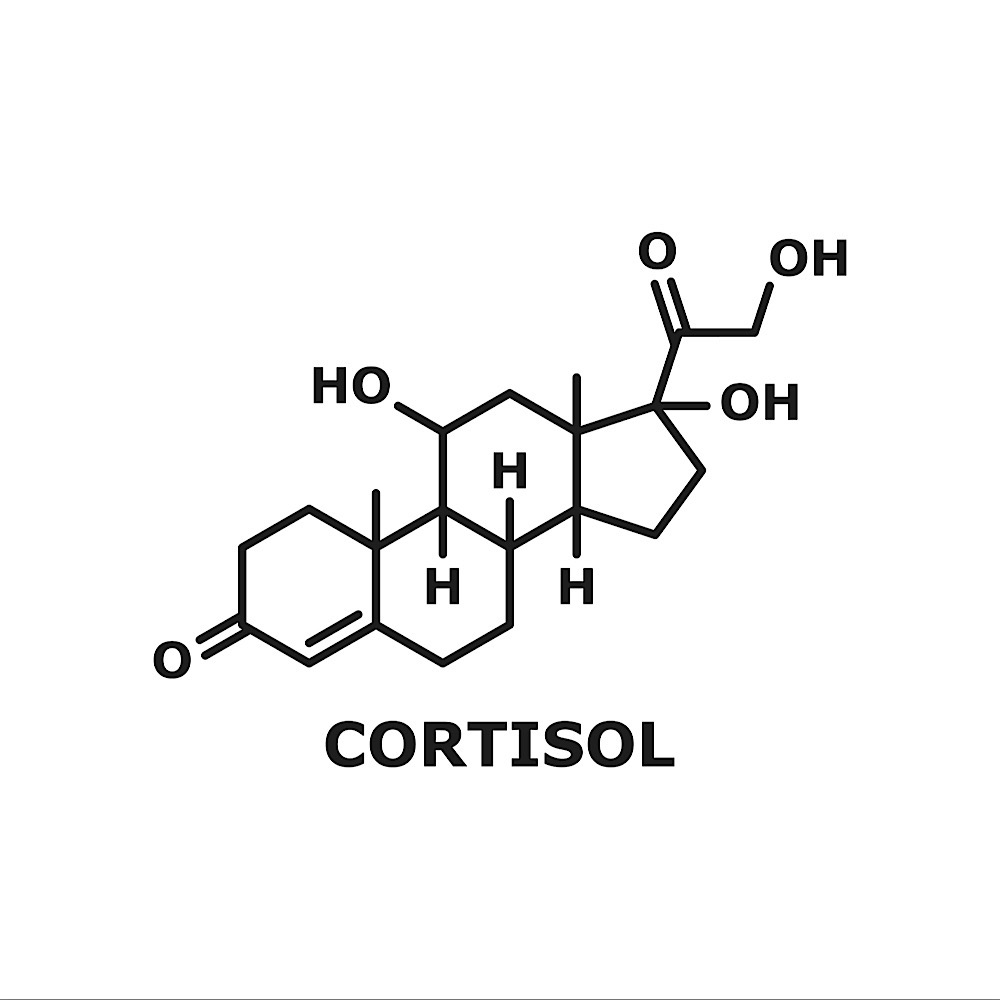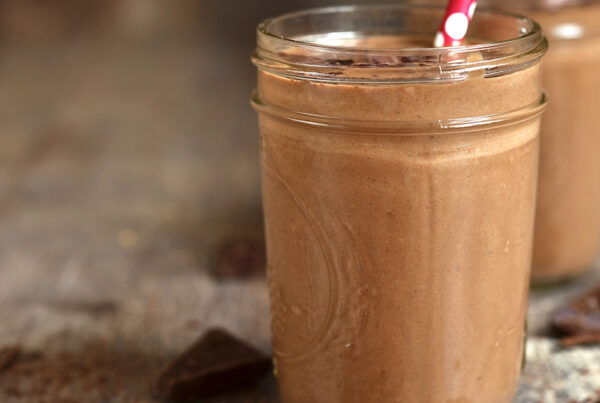If you haven’t taken a moment to appreciate how amazing your body is, I get it, because a lot of the time it doesn’t feel very magnificent. All of the amazing things that your body does each day gets overshadowed by the onslaught of life…especially stress. Our modern world lends to more than just feeling overworked and stressed. We are also exposed to daily toxins that wreak havoc on our body. Each day we accumulate so much junk emotionally, chemically and physically.
This leaves our endocrine system especially vulnerable to toxins in our cleaning products, over-the-counter drugs, and even personal care products. The average woman is exposed to over 100 toxic chemicals each day. This has a very negative impact on your reproductive and metabolic hormones.These persistent toxins can stay in your body for years, slowly creating damage that affects your sleep, energy, and brain function and even causes weight gain. It’s no wonder you can’t lose weight, even when you are doing everything right.
And the solution to these mounting issues is to give your hormones a detox. Detoxing your body and hormones is an absolute must and it’s the one area that gets overlooked by most doctors. Detoxing means cleaning out the body, removing toxins, cleaning out your junked up hormone receptor sites, and resetting metabolic and reproductive hormones. We clean our home, we even put Drano in our drains, we declutter our desks…all so that things flow smoothly and our space and our minds can perform optimally. So why wouldn’t we remove the gunk from our hormonal systems that build up from chemicals in our food, endocrine disruptors in plastics and heavy metals in our environment? Given the environment we are exposed to each day, my personal opinion is that everyone does a detox for at least 30 days, a couple times a year.
symptoms
Sex hormones (especially estrogen) affect the microflora in the gut, which alters GI tract functioning. This can lead to bowel discomfort, abdominal pain, bloating, constipation or diarrhea, and nausea before or during menses.
Estrogen’s impact on the gut may also explain why women are more prone to irritable bowel syndrome (IBS) than men.
Other signs of hormonal imbalance include:
- Constipation
- Heavy or irregular periods, missed periods, frequent periods, or stopped periods
- Vaginal dryness and itching
- Hyperpigmentation of the skin
- Puffy face and swollen, ‘growing’ nose
- Decreased or increased heart rate
- Weakened muscles
- Pain in the muscles, tenderness, and stiffness
- Pain and swelling in the joints
- Depression
- Infertility
- Anxiety or irritability
- Purple stretch marks
personal care products
Thousands of man-made products contain xenoestrogens, which means they mimic estrogen and disrupt your hormone balance. There’s a long list of chemicals that mimic estrogen. Here’s the short list of the more common ones you’ll see:
- Parabens. Manufacturers use this well-known xenoestrogen as a preservative.
- Phthalates. You’ll find phthalates in plastics and as an emulsifier and stabilizer in topical products.
- Benzophenones. This additive alters estrogen and testosterone production. Most often, you’ll find it in sunscreens.
- Triclosan. Manufacturers use triclosan as an antibacterial agent. Researchers found that it measurably acts on estrogen receptors. For example, it increased the size of uterus and grew breast cancer cells.
Another rule of thumb is that if it has a strong chemical or perfume smell, there’s a good chance it’s messing with your hormones. The exception is products fragranced with essential oils, which can smell strong but won’t disrupt your hormones. It’s best to avoid products with “fragrance” on the ingredients list.
You absorb a substantial portion of the things that come into contact with your skin, so it makes sense to be conscious about what’s in the products you use. Whether you switch out your products as you run out, swap one thing a month, or go nuclear on your shelves, you’ll need to pay attention to your personal care products to reduce your estrogen load.
Personal care products also relates to the next topic below, estrogen in your water, as there are a lot of personal care products, including ‘natural’ makeup which contain water, and the source is never listed. Try to avoid these products if you do not know where the water came from, especially if it is one of the first five ingredients in the ingredient list on the label.
estrogen in your water
The Environmental Working Group identified 45 hormone-disrupting chemicals in public drinking water.
As a consumer, that presents a problem. You can decide to forgo certain types of foods or check ingredients on your personal care products, but you can’t skip water. If you’re drinking water from a public source, you’re probably dosing yourself with things that mimic estrogen and disrupt your hormones. Bottled water is equally problematic. Estrogenic chemicals in plastic bottles leaches out into the water. Canned drinks lined with BPA are no better.
The cleanest water you’ll get is regularly tested well water that’s not close to factory farms, mines, or any sort of industrial complex that will contaminate it. Obviously, that’s not accessible for everyone. For the rest of us, the combination of a public water source with a high-quality filter will give you clean water that won’t change your bra size. Look for a triple-stage filter: a sediment filter, a ceramic filter (to block viruses), and an activated charcoal filter.
blocked detox pathways
What does the way you digest your food have to do with how much estrogen you have pumping through your system? Since your digestion points to how efficiently you get rid of waste that hangs around in your intestines, it has everything to do with how much estrogen is in your bloodstream.
One major way your body eliminates estrogen is through pooping. If you have slow elimination, you don’t get rid of estrogen through the digestive tract. If estrogen hangs around your intestines and moves inefficiently, it has plenty of opportunity to be reabsorbed into the bloodstream. Stack that on top of the normal estrogen your body releases at ovulation and around period time, and your estrogen levels will climb month over month.
There are hundreds of things that might affect your intestinal motility, but two you can take control of are low stomach acid and gut bacteria imbalance.
- Low stomach acid. If you don’t have enough stomach acid, your food doesn’t break down enough for a smooth move through the intestines. When food moves slowly, bacteria have the chance to feast and reproduce, which throws off the balance of your gut microbes.
- Gut bacteria imbalance. When your gut bacteria is off, owing to low stomach acid, antibiotics, heavy metal exposure, or a million other causes, it can affect the nerves that tell your intestines to contract and relax and move things along. So, an imbalanced gut both causes things like IBS and SIBO, and makes them worse.
So Why Does Your Pee Change Color When You Take DIM + SGS + CDG?
Because DIM is doing great things for you! It can be a sign that it is assisting your liver to detox your body of excess estrogen metabolites and other environmental estrogens (known as xenoestrogens). For that reason, it’s a good idea to also take some sort of liver support while taking DIM supplements. The herb milk thistle is extremely good for this. Also drinking lots of green tea is helpful for liver support. Please also ensure you drink lots of filtered water when you’re taking DIM because your body is trying to excrete toxic substances and you need to help it flush them out of your body. Add a slice of lemon and get some vitamin C too!
One more DIM side effect…
There are women who were successful with DIM who anecdotally report breast growth while taking DIM. Coincidence? Maybe. Or, it could be because clearing out the “bad” estrogens frees up estrogen receptors for the “good” estrogens, which have a tendency to perk things up. Your mileage may vary.
Typically, DIM will come in 100-200mg capsules. Since you could have detox effects, it’s best to start slow, with 100mg every day or every other day until you no longer have detox symptoms. Depending on your goals, you might stay at that dose, or work up to more.
Bodybuilders who use DIM to counteract the effects of testosterone supplementation converting to estrogen tend to take up to 400mg a day.
Cancer patients using DIM to complement their cancer treatment typically take a higher dose as well. If you’re taking a higher dose than the bottle suggests, make sure you’re supervised by a qualified medical professional.
There’s no need to power through the difficult part. If you’re miserable, ease off and pick back up once you don’t get the fatigue and headaches.
DIM might sound like a wonder pill, but the reality is that it acts mainly on one small mechanism that causes havoc when it’s out of control. To get DIM naturally, eat your cruciferous veggies. If you think DIM might benefit you, talk to a qualified medical professional and see if you can get yourself onto a program that will give you the most return.
New Research on DIM
I’m excited to share some new research on DIM, just released.
But firstly, an older study on mice reported in 2008 by American researchers found that DIM had anti-viral properties and immunomodulatory function – this means that when the immune system is too low, DIM will boost it, and when it is over-reacting, DIM will help to quiet it down.
Research published in October 2016 by Korean researchers examining the effect of DIM found that DIM has anti-inflammatory properties (always a good thing for your anti-cancer arsenal). It also suppresses the expression of vascular endothelial growth factor, a growth factor associated with a tumor’s ability to create new blood vessels to feed itself, a process called angiogenesis.
Curcumin is Critical for Detoxification
Curcumin, the widely studied compound from turmeric, is an excellent partner nutrient to DIM.
Curcumin enhances detoxification enzymes, making it easier for your body to rid itself of toxic estrogen mimics (xenoestrogens) that come from environmental pollution. Curcumin’s anti-inflammatory and antioxidant strength protects the liver as it processes these toxins, too.
Additionally, curcumin fights cancer and has been shown to relieve PMS symptoms, so it’s a great botanical to add to your regimen for even more than healthy detoxification. The curcumin I prefer is blended with turmeric essential oil for enhanced bioavailability, so it overcomes absorption problems seen with standard curcumin extracts.
Grape Seed Extract: Unsung Hero for Hormones and Weight
A clinical study found that grape seed extract can significantly reduce hot flashes, insomnia, anxiety, and other symptoms of menopause. Women in this study also saw an increase in lean muscle mass (a real plus as we get older), and a reduction in blood pressure.
Grape seed extract also eases the ups and downs of blood sugar and may stop additional fat cells from developing. That’s not just good for your weight, but for your hormone balance as well: fat cells are known to be storehouses of hormones.
Grape seed extract partially inhibits aromatase, an enzyme that converts androgen into estrogen and is implicated in many risks to health, including breast cancer. Leading research shows that it may also prevent or treat the irregular menstrual cycles and potential infertility of endometriosis, which is typically extremely resistant to conventional therapy.
The grape seed extract that I prefer is a French grape seed extract with low-molecular weight oligomeric proanthocyanidins (OPCs) that is much better absorbed. For many years, the perception of grape seed extract has suffered due to poorly produced ingredients with high tannin content that was neither absorbed well nor provided any of the results people expected. It truly pays to get the best in grape seed extracts.






